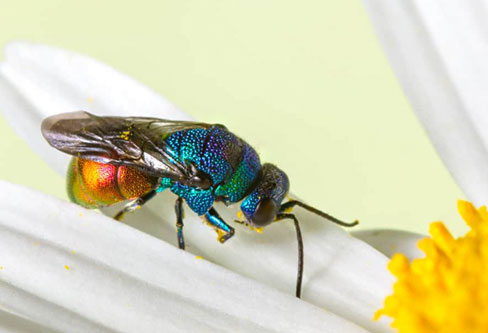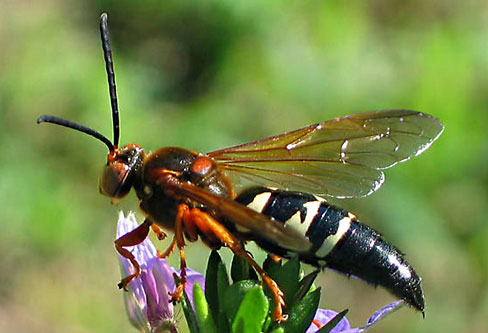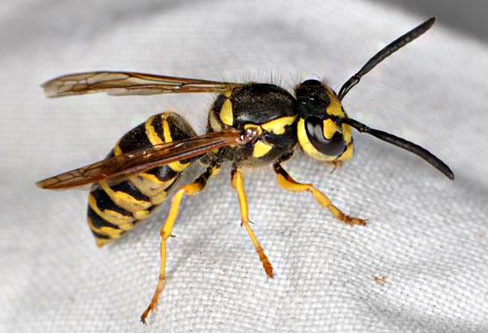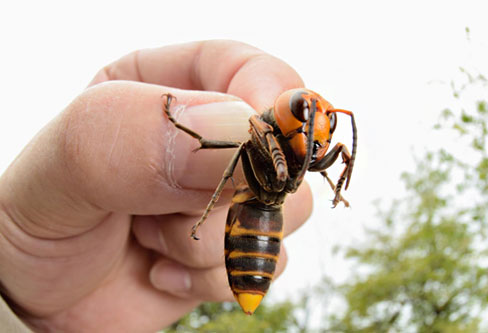Presence of wasp around the area makes your work difficult. Wasp bite activated anaphylactic shock in humans that cause so many allergies on an instant. They are easily provoked to attack anything that comes in their way. To avoid such an encounter you must select a wasp pest control service that does treatment to reduce the risk of the painful sting to you and your family.
Wasp Pest Control
Types of Wasp
Wasps are 30000 known species and differ from each other on the bases of color, vastly, size and habits, etc.
Jewel Wasp
Jewel wasp is named because of its color and beauty. It is the most mysterious and attractive wasp. These wasps are predators they mostly attack roaches and feed on them for nutrients. Jewel wasps have a skill that is close to that of neurosurgery. It inserts the sting brain of the roaches and injects venom.
This wasp is native to Africa and Asia including some pacific islands also.
Cuckoo Wasp
Cuckoo wasp is bright mix of red and green colors. Its shape has intricate sculpturing on the exoskeleton. Because of its color, it is also called Red-Tailed wasp. Cuckoo wasp has the ability to curl up into a ball when threatened.
Like cuckoos bird, these wasps also not build their nests and lay their eggs in nests made by solitary wasps.
Cicada Killers
Cicada Killers are scary and sound like they have flown right out of a horror movie. They use their sting to not kill but maim.
Cicada Killers paralyze their victims, which can be insects as large as cockroaches. The still-alive insect is then carried to the nest where the wasp has already laid eggs. The incapacitated insect is then used to feed the larvae and provide essential nutrients.
Yellowjacket Wasps
Yellowjacket wasps are similar in appearance to bees and only dangerous to humans who are allergic to their venom. Although, while a bee can only sting once, Yellowjackets can sting multiple times at once.
They build their nests on top of trees, in shrubs, or even inside human-made buildings. Their homes can also be found in soil cavities, underground tunnels, fallen trees, and even mouse burrows. The protective aggression of these infamous wasps is mimicked by many other wasps to secure their nests and larvae.
Yak Killer
Yak Killer wasp has enough venom to kill the large animal in one sting and is big enough to be the stuff of your nightmares. It is an extremely aggressive wasp that kills around forty people in Japan every day. The sting of a Yak Killer has been described as unbearably painful by those who have survived to tell the tale.
An interesting fact about the Yak Killer: these hornets are also used to create an interesting alcoholic drink, which takes up to three years to prepare and is said to have various health benefits.
Umbrella Wasp
Umbrella wasps also are known as paper wasp. It collects fiber from dead wood and plant stems to build their nest that is available on the home’s eve.
They are famous as Umbrella wasp because their nest has the shape of umbrella. In appearance, they are black color, elongated body, and yellow colored legs and antennae.
They made a nest in a sunny area where they can get much more heat and light. That’s why they mostly found in the South and west direction area of a place.
Bumble Wasp
Bumble Wasp are the social insects. They made their nest usually underground. It leaves around the texas homes and are very similar to the carpenter bees. Its size is 15 to 25 mm.
Bumble wasp is commonly found in North America and they are important pollinators of flowers so they are beneficial.
Mud Dauber Wasp
Mud Dauber Wasp nest made of mud. Nest has many one inches mud tubes connected to each other side by side.
Mud daubers are not live in colonies and not social also they are solitary wasps.
These waps are calm in nature, you don’t need to be afraid of it.
Paper Wasp
Paper Wasp collect fiber to the dead woods and trees and mix it with their saliva and made gray or brown papery nest.
Some paper Wasp is also known as umbrella wasp due to the umbrella design of their nest.
Their nest found in the sheltered areas like home’s eaves, tree branches, open pipes, etc.
Wasp Removal Treatment
Different types of insecticides treatment are available to kill and get rid of Wasps. You need to remove all types of food before the treatment of Wasps or pesticides.

Spray
The spray is the powerful and best way to remove pesticides around you. Spray on the wasp’s nest to kill them. Do it at night because they have less active and all the wasps are in the nest.

Drenching
In Drunching concentrated liquid is used as an insecticide. Concentrated liquid insecticide is a Cuzmic CS mix with water and sprays with the help of a pump. This is use on the active nest.

Dusting
It is used when the nest is not active, take insecticide dust and load it in the hand duster and apply it at the hole of the nest then move away quickly.

Bait
In this technique use that product or foods that attract wasp to trap wasps. Some wasps like sweet food and some like meat.
Wasp Pest Control Services
Wasp nest has lots of wasps, so removing a wasp nest is a very dangerous task. We have experts for wasps control and our services are divided into different categories:-
The indoor area more closets so the method we use for wasp removal will be different. In indoor pest control processes, the area we include is-
- Bedroom
- Kitchen
- Washroom
- Office place
As outdoor area doesn’t allow closet so we have to use products that are strong and effective for a long duration. So, here the pest product is used in a larger quantity than we take in indoor or in house pest control. The area we include in outdoor pest control are-
- Hall
- Balcony
- Terrace
- Garden
- Windows & Exhaust fans
In Organic wasp control services, we use organic products. Because somehow the chemical products have some negative effects on the environment and our health. Some of the best ways to keep termites out without using insecticides.
- Diatomaceous Earth can be used at the place of Boric acid in the same fashion. That can protect your wood for a long period of time.
- Boric acid is directly applied to the wood and around the building foundation. This heals into the wood and provides long-lasting protection to the termites.
- Orange Guard is an OMRI Certified Organic Insecticide. It’s made of citrus peel extract, so it is safe for indoor.
- Botanical Insecticides is less toxic because it is made from plants that have insecticidal properties.
To get rid of wasp fastly, we use some chemicals products. As you know chemicals are so powerful and take quick action. We use some chemicals are:-
- Abamectin
- Permethrin
- Deltamethrin
- Hydramethylnon
- Boric Acid
- Pyrethrum
- Fipronil
- Cyfluthrin
- Bifenthrin
Why We Need Wasp Control Services
Wasps are beneficial to your gardens and ecosystems because they are very good pollinators. But some other types of species can harm peoples, you and your children when they feel threatened and get aggressive. They have very painful stings that can cause anaphylactic and some different types of allergy. That is the reason to control Wasp form your inside and outside the home and gardens.









